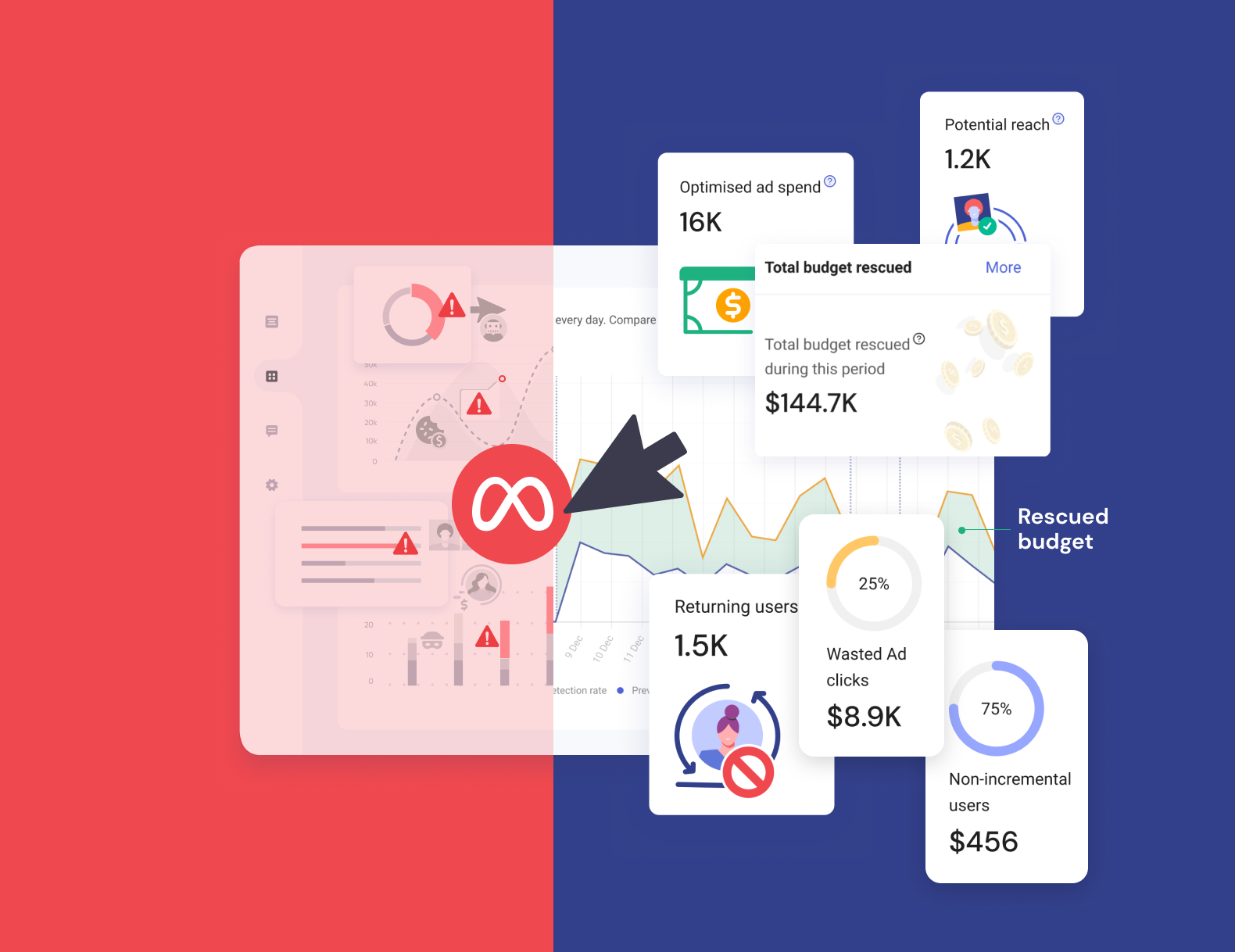Looking to drive user acquisition for your mobile app?

What’s the deal?
With the news that fraudsters are set to steal over $100 billion in 2023, marketing teams need to start paying attention to ad fraud. Figures from 2021 show that 7% of app installations on iOS devices were non-human, the same for 12% of installations on Android. Worse yet, there was a 20% post-installation fraud rate from Apple’s app marketplace, leading to them removing 170 million fraudulent accounts.
170 million! If anyone was in denial about the prevalence of mobile ad fraud, these figures are enough to change their mind.
The effects of ad fraud are harmful for any industry, but none more so than mobile apps as they look to scale user acquisition. Apps are particularly vulnerable to bad actors due to the sheer volume of them out there—even the most conservative estimates put the number at around 8 million globally. That’s a lot of apps, with a lot of marketing spend. With so much competition between businesses, many are spending huge amounts on advertising to try and bag the lion’s share of downloads and stand out in a crowded market. Unfortunately, fraudsters know this too, and fraud always follows the money.
With millions of apps throwing money and volume at their ads to reach high customer acquisition targets, fraudsters are having a field day pilfering their budgets, and they’re going mostly unnoticed. Invalid traffic gets harder to catch the bigger the campaign, which can lead to a cycle of throwing more money at a problem which keeps getting bigger. Not a situation your app wants to be in mid-launch.
What tactics are fraudsters using?
Unfortunately for marketing teams, fraudsters have developed some pretty advanced tactics for swindling ad budgets. The main methods we see are:
Click injection
The mobile’s operating system broadcasts to all apps on the same device that a new app is being downloaded. Fraudsters develop seemingly legitimate apps and tools that use this broadcast to trigger clicks to the app store. The click will occur after the new app is downloaded, but before it is opened, making it look like the specific (ie. most recent) click that delivered the install, thus stealing attribution of that install and giving the fraudsters a pay out.
Click flooding
This occurs when a large volume of clicks are faked on a mobile device, even though the user never clicked the ad. If the user or a user with a similar fingerprint later visits the target website and installs the app, the spammer receives credit for the install and is paid a commission. Due to the install actually being misattributed this is considered invalid.
App install farms
Here fraudsters use banks of physical devices to actually click on ads, download apps to devices, and then open them to trigger install events. The device ID is sometimes reset between app installs, making each install from the same device look like it is a new user. This tactic makes clicks look like real clicks on real devices (because they are!) but as the users do not intend to use the app, there is zero ROI for the developer.
Why is this particularly detrimental to newer apps?
The misattribution snowball
Misattribution occurs when fraudsters make it appear a channel is delivering more value than it really is, and this has a snowball effect on your performance. A single install attributed to the wrong source will inflate the value of that source not just by one install, but by the value of all the subsequent events of that new user.
We witnessed this recently on a huge scale with an eCommerce app customer. During their two week audit period we detected 308k invalid installs of their app, roughly 40% of their total installs during that time. These invalid installs resulted in a huge 61m invalid events post-attribution.
Without a reliable understanding of the traffic’s quality, there is a risk that campaigns will be scaled with sources that are delivering a high proportion of fraudulent installs. This puts the overall success of a campaign at a huge risk of poor performance. Poor insights can also lead marketers to underinvest in the channels that deliver the best results, restricting their advertising ROI.
You may be relying on your MMP (mobile measurement partner) to mitigate misattribution, but their fraud prevention tools are rarely up to the task of fully protecting large scale advertising campaigns. To get the best value from your MMP and ensure verified attribution, ad fraud prevention software must be used in conjunction.
The risk of a ‘cold start’
Ad fraud can also damage an app’s relationship with its advertising and media networks. A lack of transparency into campaign numbers and attribution is partly why it’s common for advertisers to frequently change networks and traffic sources.
If this is the case, marketers will have to begin their entire mobile campaign process from scratch—what we call a ‘cold start’. This can massively inhibit growth, and puts optimisation efforts and insights back to zero. This risks wasting precious investment money.
What’s an app to do?
Pre-launch, apps need to get the most out of their marketing budgets to hit the ground running. Ad fraudsters pose a serious threat to campaign budgets and optimisation at a critical time in an app’s growth. To fight back, apps need to implement a smart strategy, not a one-size-fits-all approach many legacy partners offer, it’s the only way to safeguard budgets from large scale bot attacks and stay ahead of the competition.
With a clearer understanding of where invalid traffic is coming from, apps can enjoy an increased ROAS with greater conversions and confidence in their data and analytics. By getting ahead of the sources before it affects the budget, businesses can avoid playing catchup and chasing lost revenue that is already in the hands of fraudsters.
TrafficGuard enables apps to access better results for their campaigns with a proactive, multipoint approach. We offer both monthly and annual contracts to give your app the best start. Check out the offers below and reach out to our team for more information.
Get started - it's free
You can set up a TrafficGuard account in minutes, so we’ll be protecting your campaigns before you can say ‘sky-high ROI’.
Subscribe
Subscribe now to get all the latest news and insights on digital advertising, machine learning and ad fraud.








